|
Messerschmitt Bf 109 G-10
WNF / Diana
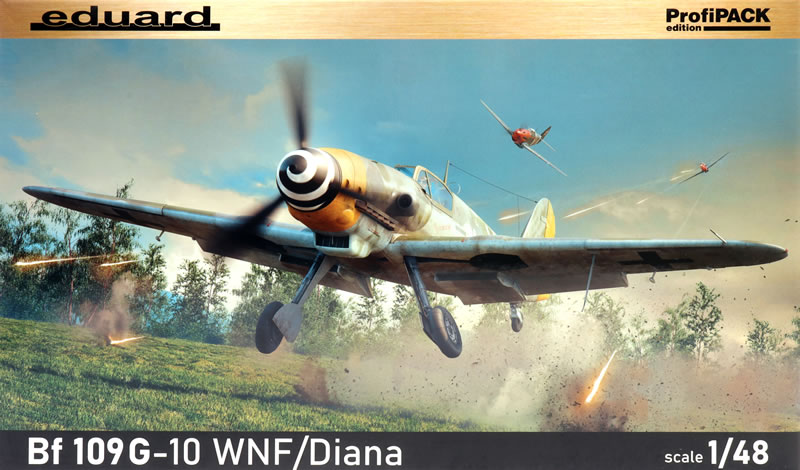
Eduard ProfiPACK, 1/48 scale
S
u m m a r y |
| Catalogue Number: |
Eduard Kit No. 82161 - Bf 109 G-10 WNF / Diana |
| Scale: |
1/48 |
| Contents and Media: |
188 parts in grey coloured plastic (including more than 70 marked not for use); 10 parts in clear; colour photo-etched fret; self-adhesive die-cut masking sheet; markings for four aircraft |
| Price: |
USD$49.95 plus shipping,
available online now from Eduard
GBP£32.30 (£26.92 Export Price) plus shipping available from Hannants |
| Review Type: |
FirstLook |
| Advantages: |
Accurate; high level of detail; outstanding surface features including crisply recessed panels and subtle rivet lines where appropriate; includes colour photo-etched parts; separate control surfaces; many useful options; high quality decals; includes die-cut canopy masks. |
| Disadvantages: |
Somewhat overheight exhaust stacks. |
| Conclusion: |
Eduard's 1/48 scale Messerchmitt Bf 109 G-10 WNF / Diana is a very welcome member of their new tool Gustav family. . With the other 1/48 scale options being the Revell kit from the 1970s, the 20-year-old Hasegawa kit and the frankly weird looking Fujimi Gustav, Eduard's Bf 109 G-10 kits shoot straight to the top of the list. |
Reviewed by Brett Green

The Messerschmitt Bf 109 G-10 was an attempt to improve the performance and extend the service life of this crucial German fighter. Increasing weight and the need for additional ordnance was taxing the capabilities of the standard Daimler Benz DB 605 A engine in the Messerschmitt Bf 109 G-6.

The DB 605 D would supply up to 1,800HP to the Bf 109 G-10 (2,000HP using emergency power), compared to 1,475HP available to the Bf 109 G-6 from the DB 605 A.
Externally, the new powerplant featured a larger supercharger, modified engine mounts, a deep oil cooler and a larger crankcase. The forward fuselage was redesigned to accommodate these changes. Large, streamlined bulges on both sides of the engine cowl replaced the familiar cowl gun breech blisters of the Bf 109 G-5 and G-6. A fairing was fixed to each fuselage side below the cockpit to improve airflow. These combined to give the nose of the new variant a more streamlined appearance. Two circular blisters were also added to the lower nose to permit clearance for the larger crankcase and oil lines. A deeper housing for the new oil cooler was another obvious change.
Detail photographs of these features may be seen in “Late-War Bf 109 G/K in Detail - Cowl Bulges for DB 605AS series & D Powered Bf 109s”, Part One and Part Two, in HyperScale’s Reference Library.
I have also reproduced some of Derek Brown's photos here. These show one of two Bf 109 G-10s under restoration at the Evergreen Aviation Museum, McMinnville, Oregon during the late 1990s.
They offer a rare, almost unique opportunity to examine the complex and subtle curves of the G-10 engine cowling, assisted by light reflecting on the bare metal.

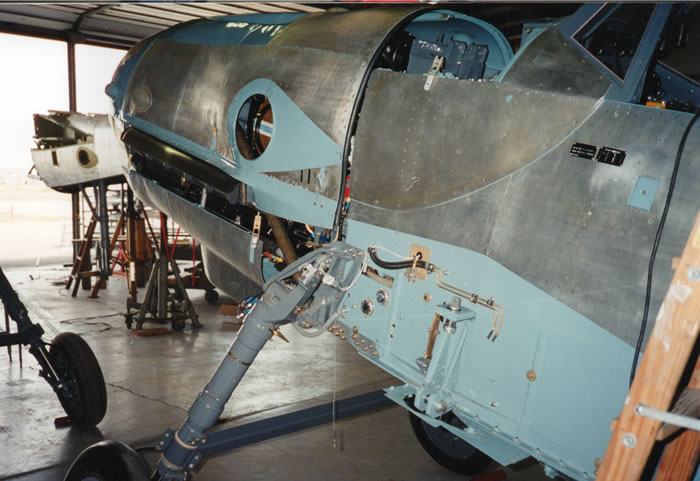
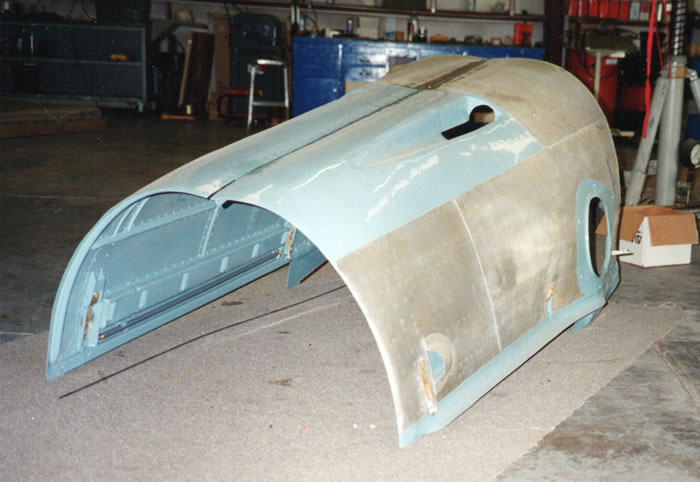

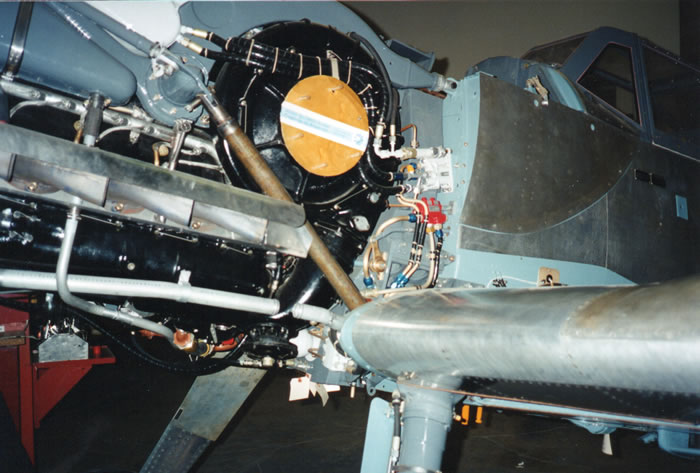
Raw materials were desperately short by the time production of the Bf 109 G-10 commenced in October 1944. The G-10 was therefore produced using components from earlier airframes. This led to many variations in production, including alternate configurations for the tail wheel, aerial, cockpit air intakes, main wheels, wing bulges and tail surfaces.
Eduard continues to work through the Messerschmitt Bf 109 G family, their latest additions being the high-performance Bf 109 G-10. In common with other sub-types in the Bf 109 family, the G-10 was fitted with many different components resulting in a number of distinct, and some not-so-distinct, variants.
This time around, Eduard presents the Bf 109 G-10 produced at the Messerschmitt WNF (Wiener Neustädter Flugzeugwerke - a factory near Vienna) and Diana (Czech) plants. These typically were fitted with the new wide main wheels, long upper wing bulges and the new streamlined cowl to accomodate the larger supercharger and modified engine mounts. The tail wheel may have been the long or short variety.
Eduard's Bf 109 G-10 WNF / Diana ProfiPACK comprises 188 parts in grey plastic, 10 parts in clear, a coloured photo-etch fret, self-adhesive canopy masks and markings for four aircraft. More than 70 of the parts are marked “not for use” and there are a few optional parts too, so the actual number of parts used is quite modest.
The wings are tooled accurately for the WNF / Diana version.

As usual with Eduard's Gustav family, the lower wing is full span and upper wings provided in port and starboard halves.
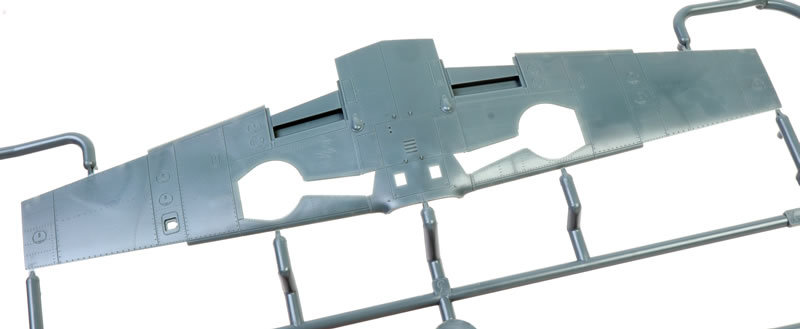
Structural detail is moulded on the inside of the upper wing, which will be visible from below as the wheel well ceiling.
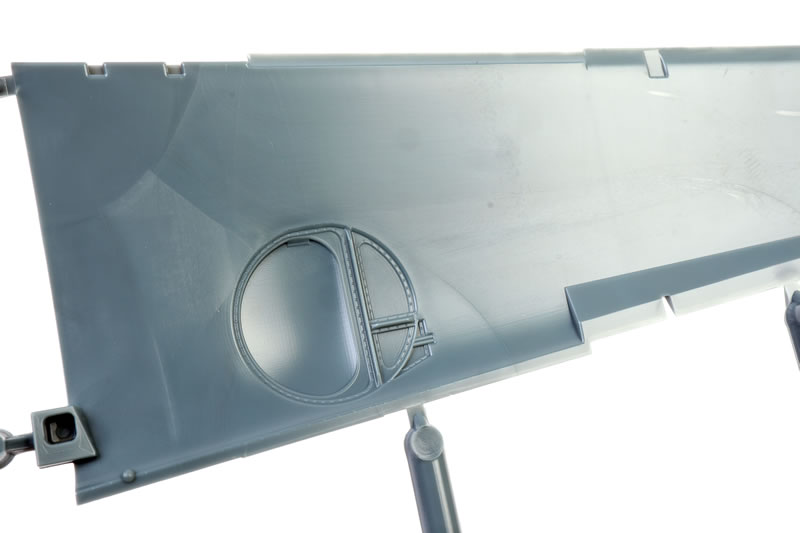
The fuselage is moulded with a separate fin, making it easy to cross-kit the tall and short vertical stabilisers.
The compound bulges of the new streamlined engine cowling of the G-10 are subtle, especially the port side that accomodates the larger supercharger and modified engine mounts. I think Eduard has done a pretty good job here.
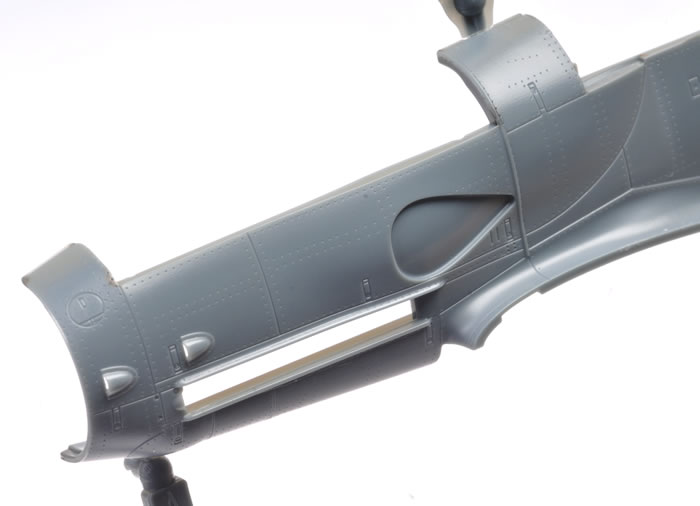
They have depicted the kinked bottom edge of the cowling and the compound bulge on the port side.
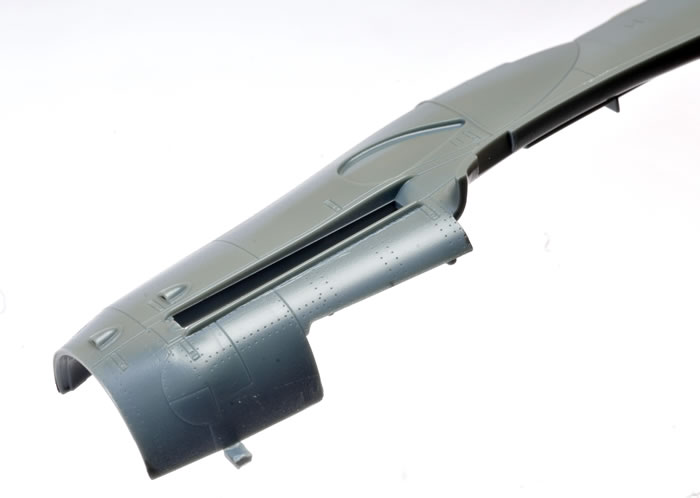
The fixed fairings are also moulded as part of the fuselage halves.
The armoured glass “Galland Panzer” and several optional windscreens and canopies are provided on the clear sprue. The inclusion of the clear fuel line is a nice touch. The inspection tube may be masked so that it remains clear after painting.
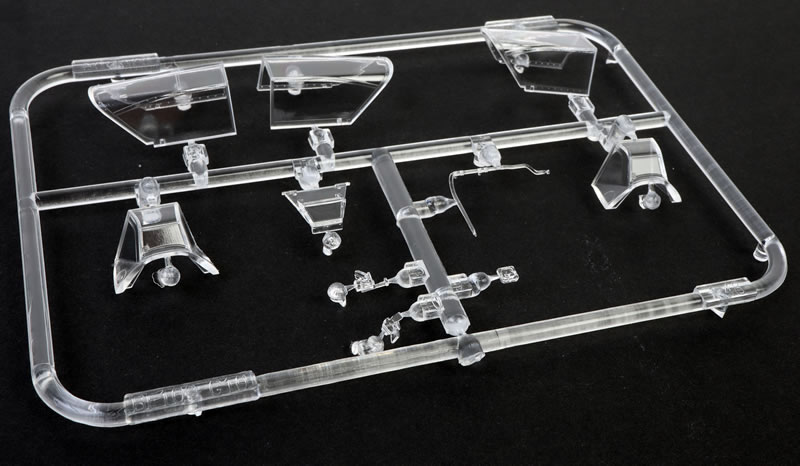
The photo-etched parts are new too.
Each instrument dial is topped by a glossy clear dome that looks like a lens. It is hard to pick this up with a camera under studio lights, but it looks convincing when viewed close-up and personal.
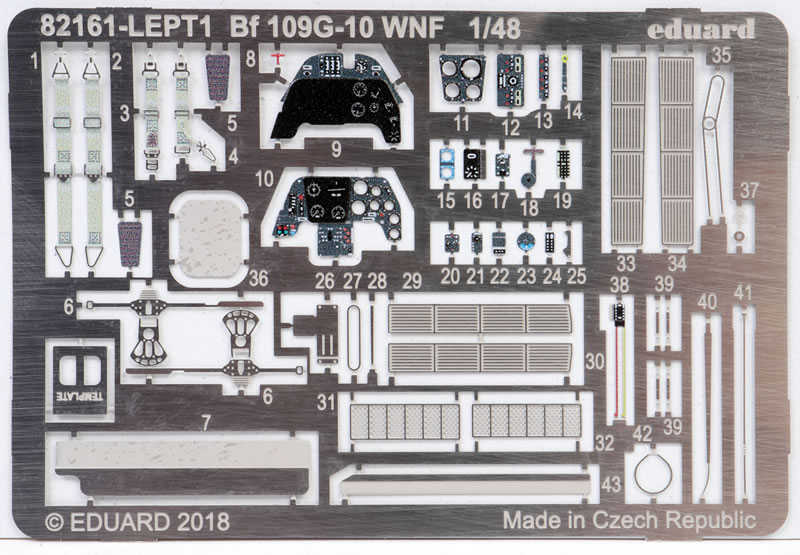
Apart from these replacements and additions, the other sprues are the same as Eduard's other new-tooled Bf 109 G kits. This is a good thing!
In 2013, Eduard’s Spitfire family set a new benchmark for 1/48 scale surface detail, and this Bf 109 G-10 is equally impressive in this regard. Panel lines are very crisp, fine and even. Lines of rivets are present, but they are incredibly subtle. The rivet lines seem to accurately follow the pattern applied to the full-sized aircraft too.
I was impressed to see that the small scoops on the nose are actually hollowed out - nice! Other raised surface features include the sealing strip between the mid-fuselage and the rear of the engine cowling.
Fabric matches this high standard, with strip and stitching texture beautifully presented on the control surfaces. If you look closely enough, you will even see the zig-zag pinking edges on the fabric strips.
The wheel wells are nicely detailed and are correctly concave thanks to the bulges moulded to the top of the wings.
Eduard depicts the wheel well sidewalls with the zippered canvas covers at the rear. The fabric texture looks good, and the zipper is represented by a raised line.
The exhausts are supplied in one piece for each side. The centreline weld beads are present, and each of the stacks are hollowed out at the end. In common with the previous Eduard Bf 109 F/G family, the exhausts are slightly too tall. This is only really apparent on the starboard side as the port exhausts are partially covered by an extended fairing.
Propeller blades look to be a good shape, with nice pitch collar and hub detail.
Markings
Markings are supplied for five nicely varied Messerschmitt Bf 109 G-10s:
-
Bf 109 G-10/U4, II./JG 52, Brno, Protektorat Böhmen und Mähren, April 1945. Finished in RLM 76 Light Blue lower surfaces with RLM 75 Grey Violet and RLM 83 Dark Green upper surfaces. Yellow rudder and forward cowling.
-
Hungarian Bf 109G-10/U4, W. Nr. 612769, 101. vadászezred, Neubiberg airfield, Germany, May 8th, 1945. Finished in RLM 76 Light Blue and panels of bare metal on the lower surfaces with RLM 75 Grey Violet and RLM 83 Grey Green upper surfaces. Rudder and fin finished in RLM 81 Grey Violet and RLM 83 Dark Green over RLM 76 Light Blue.
-
Bf 109G-10/U4, W. Nr. 611048, II./JG 52, Neubiberg airfield, Germany, May 8th, 1945. Finished in RLM 76 Light Blue lower surfaces with RLM 75 Grey Violet and RLM 83 Dark Green upper surfaces. Yellow rudder and forward cowling. Overpainted narrow band on rear fuselage.
-
Bf 109G-10/U4, Jasta 5 der ROA, Nemecky Brod, Protektorat Böhmen und Mähren, May 1945. Finished in RLM 76 Light Blue and panels of bare metal on the lower surfaces with RLM 75 Grey Violet and RLM 83 Grey Green upper surfaces. Rudder and fin finished in RLM 81 Grey Violet and RLM 83 Dark Green over RLM 76 Light Blue.
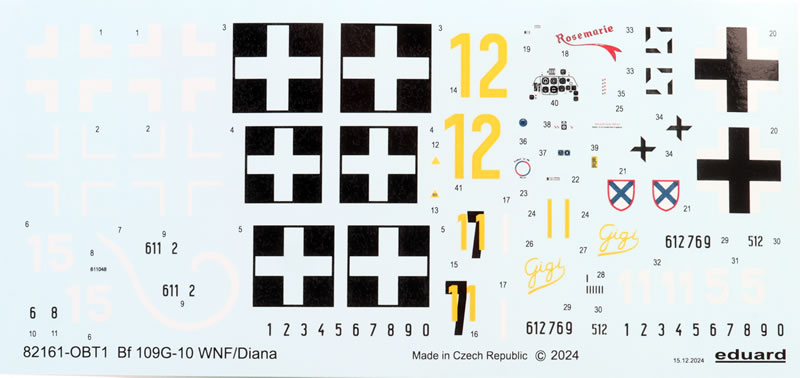
The two decal sheets are perfectly printed in the Czech Republic. One sheet carries the national markings and unique numbers, chevrons, Gruppe markings, unit insignia and kill markings; while the other has a wide selection of generic stencil markings that will be suitable for mid-war to late-war subjects.

Printing, colours and registration is perfect on my sample.
There is also one undocumented aircraft on the decal sheet - Yellow 11 "Gigi". This is an interesting aircraft with a short tail.
The kit's masking sheet also has masks for four crosses and the wing chevron - handy touches!
Eduard's 1/48 scale Messerchmitt Bf 109 G-10 WNF / Diana is a very welcome member of their new tool Gustav family.
With the other 1/48 scale options being the Revell kit from the 1970s, the 20-year-old Hasegawa kit and the frankly weird looking Fujimi Gustav, Eduard's Bf 109 G-10 kits shoot straight to the top of the list.
Kit purchased by reviewer
Review Text and Model Images Copyright © 2019 by
Brett Green
Cowl Reference Photos Copyright © 1998 Derek Brown via Bob Rinder
Page Created 17 June, 2019
Last updated
30 May, 2024
Back to HyperScale Main Page
Back to Reviews Page |
